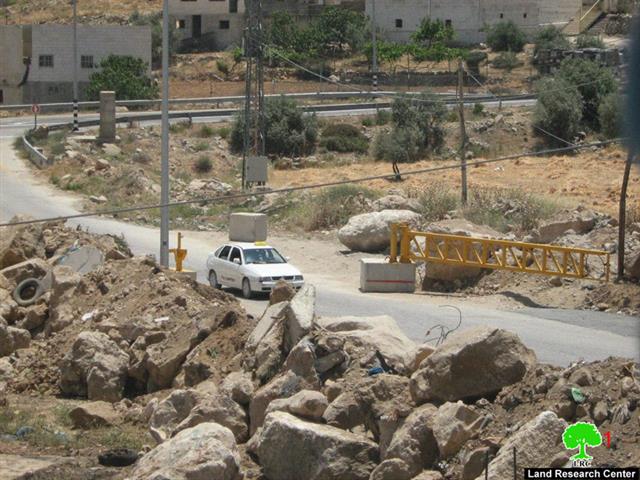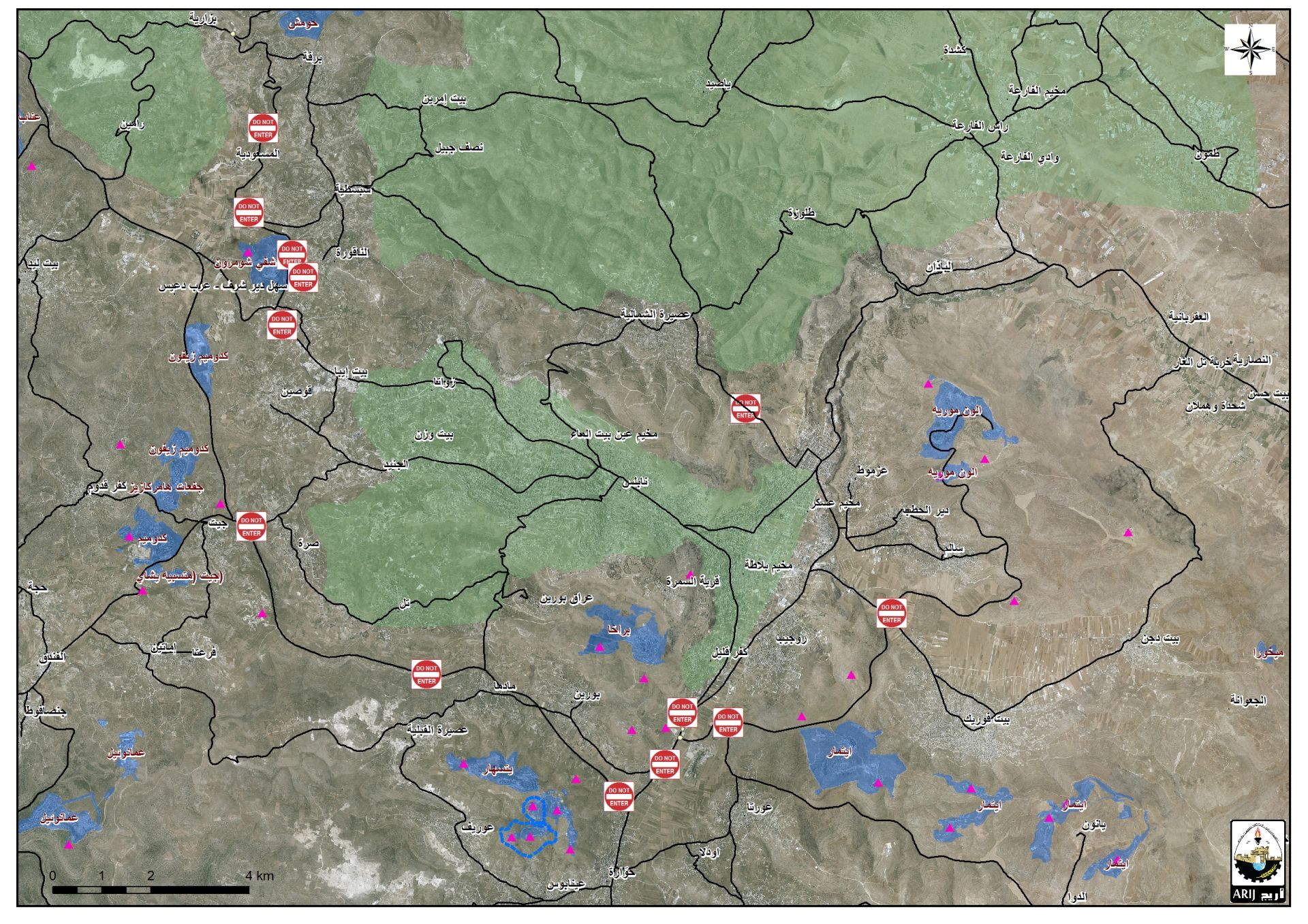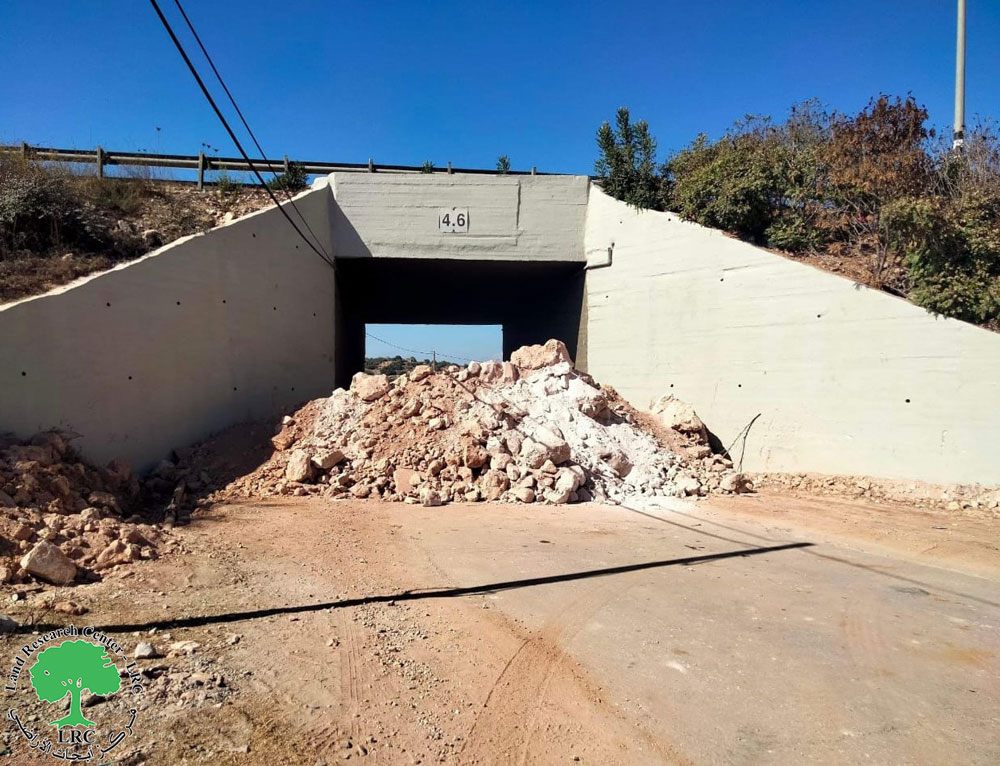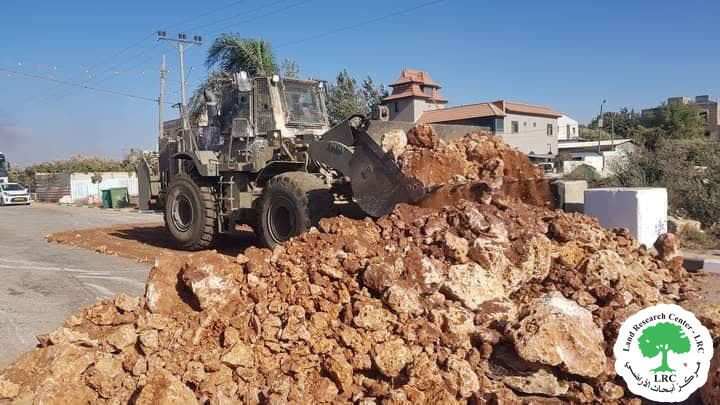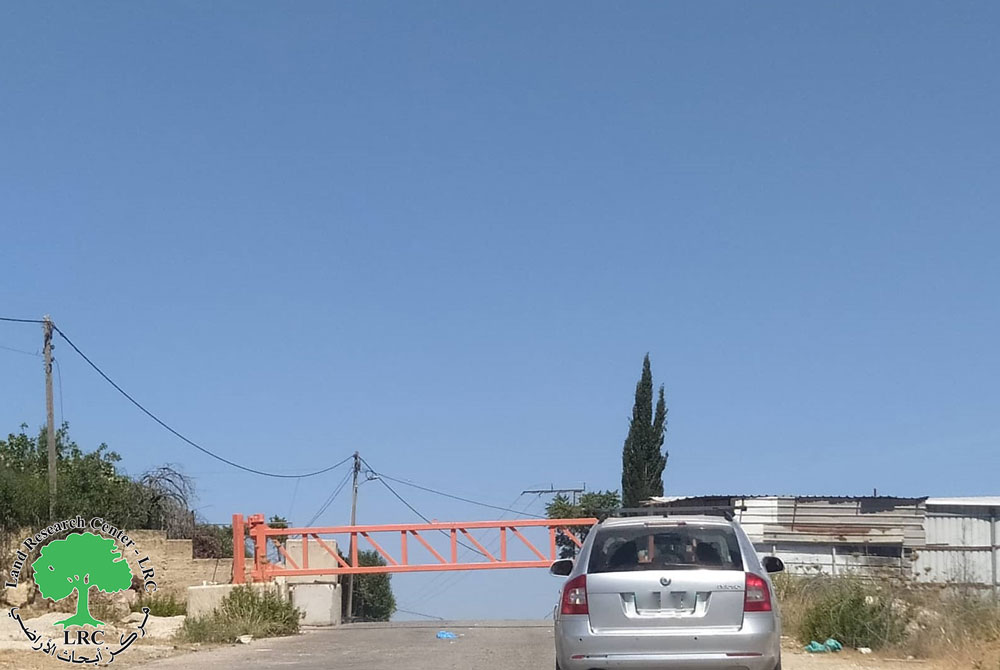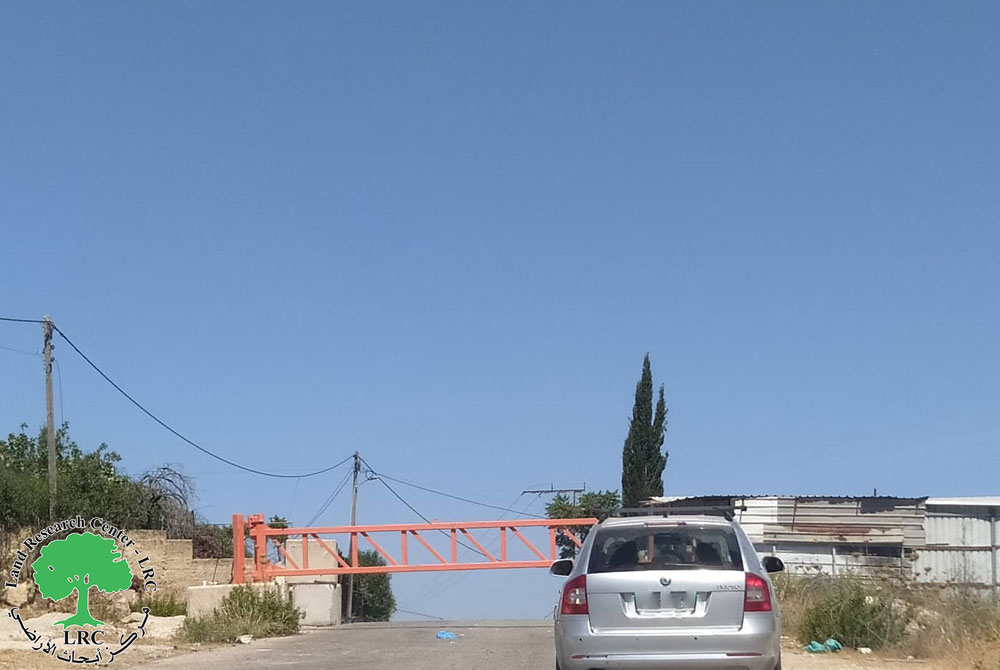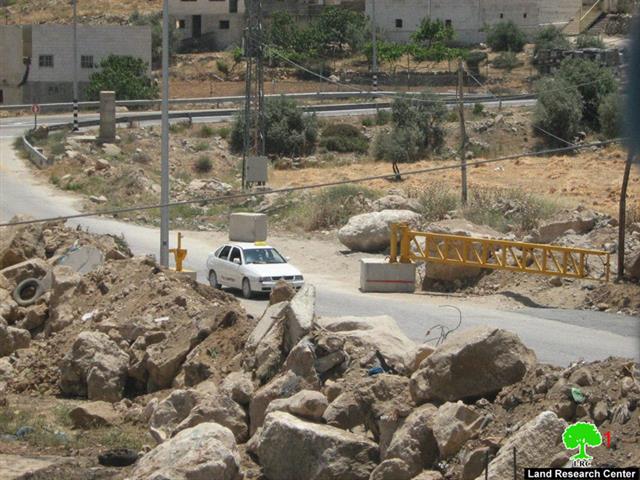Prelude:
After the lastest visit of the Quartet’s Special Middle East Peace Envoy, Mr. Tony Blair, to the occupied Palestinian territories, Israeli occupation authorities declared its intention to lift three major closures in the West Bank. One of these closures is Al Fahs closure located south of the City of Hebron which was closed since the beginning of the current Intifada for “security reasons.” The closure is an important one as it blocks the road connecting between the Industrial Zone in the City of Hebron and the towns of Yatta, Al Samu’ and Bani Na’eem. However, the declaration did not reflect the reality !!
Removal of Earthmound and Replacing it with Gates:
Israeli occupation bulldozers removed the earthmound closing the road leading to the Industrial Zone and the southern towns in Hebron Governorate. The earthmound was replaced by iron gates on both sides of Road 60 where Israeli soldiers are stationed to control Palestinian traffic in accordance with their mood.
Photo 1: Al Fahs closures which was replaced by military gates.
Moreover, occupation forces established a military tower to observe and restrict Palestinian movement. The tower was erected at the expense of the lands of Mr. Hilmi Al Jamal
Photo 2: The military tower used to monitor and restrict Palestinian movement.
Eight Years of Agony:
Al Fahs entry point was considered to be the main artery of Palestinian movement to and from the Industrial Zone and south Hebron towns. Its closure since the early days of the Second Intifada has caused great losses and agony for the Palestinians as it hampered their educational and commercial lives. It also led to the slowing down of the economic activity in the Industrial Zone due to lack of access of trucks carrying raw and processed materials in addition to the inability of reaching the markets in Yatta, Al Samu’ and Bani Na’eem.

Photo 3: Al Fahs road and its reopening.
Mr. Hilmi Ahmad Abdel Haleem Al Jamal (56 years old) lives in Al Fahs area since 1973. He is the head of a family composed of 19 individuals. He earns his living from working as an ironsmith and as a painter. He indicated that Road 60 has devoured 3 dunums of his land when it was established in 1995. No warning or confiscation orders were delivered to him by the occupation forces. The Road divided Al Jamals’ lands into two parts; the first part (area = 3 dunums) is located south of the Road and is currently used by the Israeli occupation to place a military tower above it. The second part (area = 5 dunums) is located north of the Road. Mr. Al Jamal has indicated that since the establishment of Road 60 he has been under constant harassment and violations from the Israeli soldiers as well as the colonists to force him to leave the area. The most notable violations, as described by Mr. Al Jamal, are as follows:
-
Since 1995 Israeli forces plow his planted land every season.
-
He placed barbwire and built a 300-meter long wall around his land in an effort to protect it. Israeli forces destroyed the wall and removed the barbwire.
-
On yearly basis Israeli colonists, guarded by the occupation army, amass on his land during Jewish holidays to “celebrate” the “festivities” of the holiday. The colonists repeatedly told him during these festivities that the land is theirs and that he has to leave.
-
The destruction of the tools and second hand equipment Mr. Al Jamal has on his land by both the colonists and the occupation forces. Such destruction has cost him at least USD 30,000 in losses.
-
Mr. Al Jamal is prevented from rehabilitating his land period. He has tried in the past to get a license to open a gas station on his land in an attempt to preserve it. However, Israeli occupation forces prevented him from doing so.
The Plowing Continues:
Mr. Al Jamal has pointed out that the Israeli bulldozers that removed Al Fahs closure on May 15th, 2008 have also plowed his land yet again. He gave the following statement to Land Research Center (LRC)’s field researcher: ' After the Israeli bulldozers removed the closure on May 15th, 2008, two of these bulldozers (a D9 and a Caterpillar) approached my 3-dunum land and plowed it atop of all the tools and second-hand equipment I had there. When I asked the soldiers about the reason behind the plowing, their reply was similar to the other times they have plowed my land; they’ve said “none of your business!!!” I knew then that the occupation had the intention to place a military camp in the area using my land. The military watch tower is already here and it is only the first step before the full installation of the military camp. '
Photo 4: The land of Mr. Al Jamal which was plowed by the Israeli occupation forces.
While writing this report Mr. Al Jamal informed LRC that an Israeli diggers (type: JCB) were present in his land and the digging process was taking place. He expressed that this incident was a proof that a number of buildings are planned to be set atop his land.
He was Forced to Leave his House:
Mr. Al Jamal was forced to leave his house in Al Fahs after an agonizing 24 years filled with colonist and soldier harassment including house invasions and furniture destruction. After the closure of Al Fahs a steep economic decline ensued to the degree that Mr. Al Jamal sold most of his tools and equipment and fled the region.

Photo 5: The house that Mr. Al Jamal was forced to leave due to colonist and soldier harassment.
Another resident of the area, Mr. Wisam Hasoona, indicated the following to LRC’s field researcher: ' What is the use if they removed the earthmounds and placed iron gates instead of them? Occupation forces can close them whenever they want. The sealing off of the entire area is easier now for the occupation soldiers; they don’t need big bulldozers anymore. They only need one soldier to open and close the gate.'
After the news of the close opening of the closure was abound, Palestinians saw in it some hope. However, the placement of iron gates and the closure of a road near the so-called “Civil Administration” in Wadi Al Harriya by cement blocks have led to the evaporation of the sense of optimism.
Photo 6: The road closed by Israeli occupation forces in Wadi Al Harriya
Mr. Maher Al Jamal lives near the newly-closed road. He expressed the following to LRC’s field researcher: ' After the closure of that street, we are forced to use an alternative road about three kilometers long. In the past it used to be only 50 meters between our house and the Civil Administration. What closure easing are the Israelis talking about??? '

Photo 7: The Israeli Civil Administration located close to Palestinian houses
and factories in the Industrial area. .
Mr. Abu Al Abed works as a taxi driver transporting Palestinians from and to Wadi Al Harriya and Al Fahs from Hebron City. He expressed the following: ' After the closure of the road we are obliged to drive an additional 4 kilometers on narrow roads. This has affected negatively my car and fuel consumption while the transport fee stays the same.
Prepared by:
The Land Research Center
LRC


